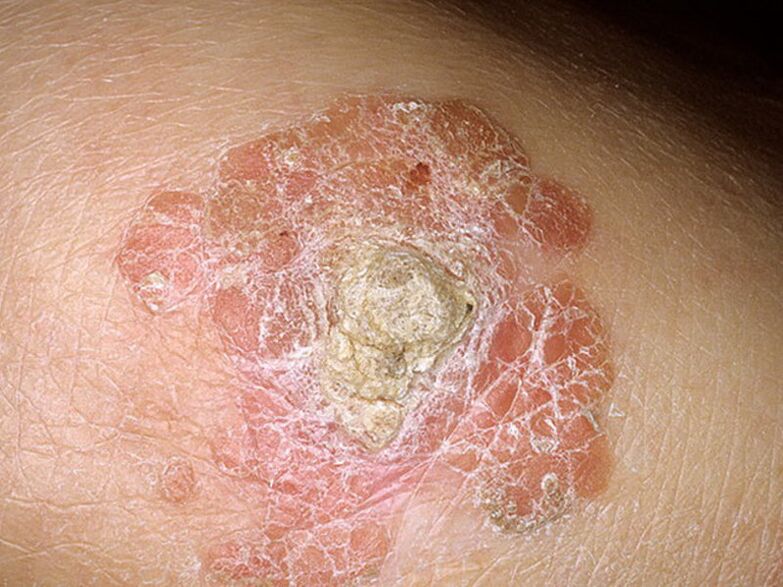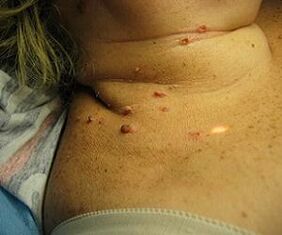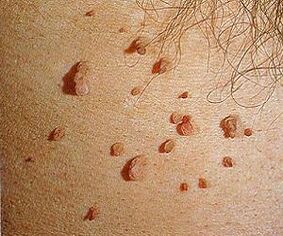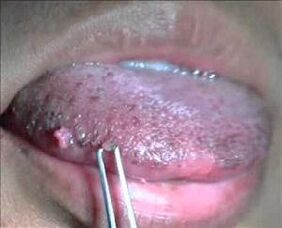
Papillomavirus is a group of viruses with about 24 subgroups. About 600 species have been discovered so far. It only spreads from person to person. Many people and doctors face the problem of diagnosing and treating human papillomavirus (HPV). The virus can give impetus to cancerous processes and is found on the skin, esophagus, oral mucosa, bronchi, conjunctiva and even the rectum.
Causes and modes of infection

Human papillomavirus is a very common disease that is spread by:
- during sexual intercourse;
- touching, kissing;
- through scratches or cuts when visiting a pool, spa, public toilet, or gym;
- during shaving or epilation.
According to statistics, even with one partner, women become infected in 20% of cases.
About 70% of the population is sick and carries HPV. The virus is particularly active in patients who have warts on their bodies (this virus causes them to appear) in the form of pointed or flat, uneven growths on the skin and genitals. In medicine it is called warts and papillomas.
Possible infection of newborns by the mother during childbirth. In babies, the disease takes the form of growths in the throat or genitals.
Symptoms and development of the virus
The latent period of the disease (latency) can last from two weeks to several years. There are currently no visible signs of the virus.
The appearance of warts on the skin can occur gradually and individually, but it is also possible for many condyloma or papilloma to grow rapidly at once, similar in shape to sea kale.
If the infection is sexually transmitted, the human papillomavirus is present in women:
- in the region of the labia;
- vagina;
- cervix;
For men:
- around the head of the penis;
- on the skin of the genitals.
When partners are seized by oral sex, it affects the mucous membranes of the mouth and throat, for lovers of anal sex - the anus, the rectum.
Men rarely suffer from the disease, although they can be carriers. When examining spouses, the virus is more common in women.
Attention!If suspicious growths are found, see a doctor immediately, as for certain types of viruses, tumors are reborn, causing cancer.
Classification and types

To date, about 600 types of the virus have been discovered. They are mostly harmless and disappear within two years of infection with normal immunity.
However, about 40 species are dangerous to humans, causing both benign and oncological tumors.
In the 80s of the last century, doctors proved the link between HPV infection and cervical cancer.
The following types of viruses are classified according to the location and type of skin lesions:
- plantar;
- "Butcher's warts";
- normal;
- apartment.
On the genitals:
- genital warts;
- flat, provocative changes in the surface of the cervical membrane and causes oncology;
- papillomas, which cause cancer of the genitals and anus in both women and men.
Other types:
- damage to the mucous membranes of the mouth;
- respiratory papillomas;
- tumors of the neck, head, lungs.
Types:
- Simple papillomas appear on the back of the palm and can grow on the knees in children. They look like rough growths in the form of cones.
- Plantar - disturbs the gait, look at the bright growths at the beginning, then grow into a wart with a rim at the base. As they grow, they form a lot of similar formations.
- Flat - the color is slightly different from the skin, but it causes itching, redness and discomfort.
- Filiform. They are called acrochords in medicine. They are more common in people over 50 years of age. At first, they appear yellowish bumps, grow, and form protrusions of up to 6 mm.
When warts appear in visible areas, the sick person can go to a medical facility for diagnosis and treatment. It is more difficult to determine the loss of the cervix or vagina, especially if women neglect to visit a gynecologist.
Virus diagnostics
If suspicious growths appear on the skin or mucous membranes in the form of papillae (warts) or uneven, bumpy warts, be sure to see a doctor. Warts do not cause cancer as often as flat papillomas, but it is best to remove them to reduce the chances of infecting those around you.
Because of the potential for cancer, such neoplasms are being studied.
The doctor will take an analysis of the human papillomavirus - scratching the surface of the mucous membrane (colposcopy with damage to the cervix - examining the mucosa at high magnification) or the skin. The sample is examined under a microscope for changes in tissue structure (dysplasia) and to determine the type of virus.
Cervical smears are divided into 5 classes according to the results of the cytological examination:
- no change;
- the changes are caused by inflammatory processes;
- there are minor changes in cell structure, histological examination is required;
- cells showing signs of malignancies were found;
- there are many cells with symptoms of cancer.
Histological examination provides a more detailed picture of the changes in tissue structure.
Clinics use special HPV tests that allow you to get more accurate test results. A positive test result indicates the presence of malignant processes in the tissue.
HPV is at high risk for oncogene. The high risk of cancer is caused by human papillomavirus types 16 and 18, which are found in 70% of cases.
Based on the results of the test, a diagnosis is made and treatment is prescribed.
HPV treatment methods

How to treat human papillomavirus? In connection with the decrease in immunity caused by the disease, doctors prescribe drugs that increase it:
- interferons;
- interferonogens.
But the main means of treatment is the mandatory removal of neoplasms by modern cosmetology methods:
- diathermic electrocoagulation;
- cryodestruction ("cauterization" with liquid nitrogen);
- laser removal;
- radio or chemical treatment;
- introduction of immunostimulants or immunomodulators into growths.
The types of treatment for the disease must always be determined by a specialist.
If the test shows that no abnormal processes in the skin are found, only papillomas with a small skin area are removed. If malignant cells are detected, surgery can affect a significant area, depending on the depth of the lesion.
Folk methods and recipes
How can human papillomavirus be cured? Traditional medicine has always helped to combat disease. Experience in the treatment of HPV is also quite extensive.
Tools suggested by traditional medicine. You can lubricate the warts:
- celandine juice;
- sour apple and pomace juice;
- dandelion;
- ammonia.
Proven recipes:
- Make an infusion of chaga, celandine, cord, freeze and put ice cubes on it 3-4 times a day.
- Grease with castor oil and cover with a cloth. Generally, 5-6 such procedures will suffice.
- Kerosene and nuts. Grind the unripe walnuts in a meat grinder and mix: for 1 part walnuts - 2 parts kerosene, the mixture should be infused for three weeks. Apply the warts 2 times a day.
To increase immunity, herbalists recommend drinking
- potato juice,
- echinacea infusion,
- rosehip tea.
Herbal Collections:
- dandelion root, nettle, lemongrass, horseradish, plantain;
- wormwood, St. John's wort, tricolor violet, dill (seeds), calamus (roots), clover (flowers), plantain.
HPV treatment at home
You can remove papillomas at home with medicines sold in pharmacies:
- A special composition that freezes warts. It should be applied carefully to avoid contact with healthy skin. After the procedure, in about a week, the growths disappear, leaving no trace.
- Treatment with self-adhesive strips. It only takes 3 hours. But it can cause uncomfortable or painful feelings if torn off.
- Dilute 2, 5 grams of aspirin powder, the same amount of iodine, 2 grams of boric acid in 100 ml of alcohol and lubricate the papillomas with this composition.
Infection prevention
And yet, let’s not forget the viral nature of the appearance of unpleasant growths. Removing papillomas from the surface of the skin cannot get rid of the disease. Therefore, you should consult a specialist to prevent cancerous degeneration of the neoplasms. It is not yet possible to completely cure HPV, but you can take steps to avoid infection.

For prevention you need:
- use a condom for casual sex. A condom does not fully protect against HPV infection, as it does not cover the entire surface of the skin from contact, but still helps prevent the infection from spreading.
- Avoid visiting baths, pools, toilets, even with the slightest wounds.
- Children are vaccinated against cervical cancer caused by the HPV virus. Girls aged 11-12 are vaccinated. The results of the vaccination showed a reduction in the disease in the women who received this medicine.
Did you find a wart or suspicious growth on your body? Consult a qualified professional and follow all recommendations. HPV can sometimes be very dangerous. Learn the handling and removal methods and take steps.















































































